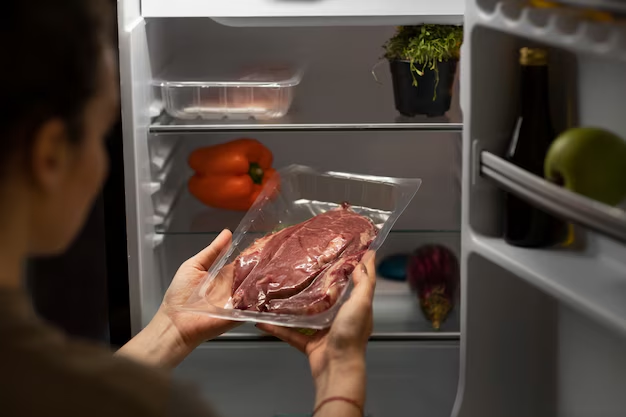How to Secure the Delicious Life of Your Homemade Jam in the Fridge
When you pour your heart (and fruit) into a batch of homemade jam, understanding how long it will last in the refrigerator is key to savoring every spoonful safely. Whether you're a seasoned canner or a beginner taking your first steps into the world of preserving, knowing how to maximize the shelf life of your homemade spreads can prevent waste and ensure you're enjoying your creations at their best. Let’s dive into the juicy details of preserving your jam's deliciousness while keeping health considerations top of mind.
Preserving Perfection: The Basics of Homemade Jam Shelf Life
Homemade jams are a delightful way to preserve the flavors of fresh fruits for months, but their lifespan in the refrigerator can vary based on several factors:
- Ingredients: The type of fruit, sugar content, and any preservatives used can impact longevity.
- Storage Conditions: How the jam is sealed and where it's stored play significant roles.
- Processing Method: Whether you use a water bath canner or another method of sealing and sterilizing also affects shelf life.
Factors Affecting Longevity
Sugar Content
Sugar acts as a natural preservative in jams. Generally, the more sugar in your recipe, the longer your jam will last because sugar can inhibit bacterial growth. Low-sugar or no-sugar jams may have shorter refrigeration lifespans.
Acidic pH
Fruits like citrus, which have a naturally acidic pH, can increase jam's longevity as acid also helps prevent bacterial growth. Adding lemon juice or citric acid to low-acid fruits can improve shelf life.
Proper Sealing
Ensuring that your jars are sealed correctly is crucial. A fully sealed jar can significantly extend the life of your jam. After making jam, a proper water bath canning process can create a vacuum seal, which protects against spoilage once refrigerated.
Refrigeration Practices
Keeping your jam consistently refrigerated slows the growth of microorganisms, thus preserving its quality over time. Make sure your fridge is set to an optimal temperature for food storage, generally around 37°F (3°C).
Practical Storage Tips for Longer-Lasting Jam
Ensuring your homemade jam stays fresh involves more than just a timely deposit into the fridge. Here are practical tips for maximizing shelf life:
Storing After Opening
Once opened, air exposure increases the rate of spoilage. Here’s how you can minimize this issue:
- Use Clean Utensils: Always use a clean spoon to scoop jam to prevent introducing bacteria.
- Seal Tightly: Re-seal the container after each use to minimize air and moisture exposure.
Shelf Storage Before Opening
If you’ve properly canned your jam, unopened jars can be safely stored at room temperature in a cool, dark place until refrigeration is necessary. This step preserves space in your fridge and contributes to longevity as sunlight and temperature fluctuations can degrade the product.
Jar Type and Condition
- Glass Jars: Use high-quality glass jars specifically designed for canning to prevent leaks and maintain a proper seal.
- Inspect Seals: Regularly check that the rubber seal on the lid is intact and that the lid hasn’t come loose.
Recognizing Spoilage in Homemade Jam
Knowing how to spot spoilage in your homemade jam is just as important as making it. Here’s what to look out for:
Signs of Spoilage
- Mold Presence: Visible mold indicates that bacteria have begun to grow. Discard any jars with visible mold.
- Off Smell: If your jam smells off or fermented, it’s best not to consume it.
- Texture Changes: Separation of liquid or significant changes in texture may be a signal that spoilage has begun.
Navigating the Jam-Making Process: Key Considerations
To optimize your jam's lifespan from the outset, consider these steps:
Choosing the Right Fruit
The type and ripeness of fruit you choose both impact the final product. Ensure your fruit is fresh and free from blemishes to begin with the highest quality base.
Sterilization of Equipment
Before starting, ensure that jars, lids, and utensils are sanitized. This simple step reduces the risk of contaminating your jam with unwanted pathogens.
Recipe Considerations
Follow tried-and-true recipes from reliable sources. This approach ensures you maintain a safe balance of sugar and acid, both crucial for preservation.
Processing Time
Adhering to appropriate processing times when using a water bath canner is essential. This method ensures that your jam is properly sealed and helps extend its shelf life.
Summary: Extending the Shelf Life of Homemade Jam
Here’s a handy list of practical tips for storing and extending the life of your homemade jam:
- 🌞 Store Unopened Jars: Keep them in a cool, dark place until needed.
- 🛡️ Use Clean Utensils: Always to prevent introducing bacteria.
- 🔒 Seal Tightly: After each use, ensure airtight sealing.
- 🌡️ Optimal Fridge Temperature: Keep your refrigerator set at the proper temperature for food storage.
- 🚫 Watch for Spoilage Signs: Mold, odd smell, or texture changes mean it's time to toss.
In sum, with mindful practices, understanding key principles, and recognizing spoilage signs early on, you can savor your homemade jam safely and enjoyably for weeks. With these expert insights into food storage and shelf life, you’re empowered to keep your preserves in peak condition, letting every spread taste wonderful and safe.
